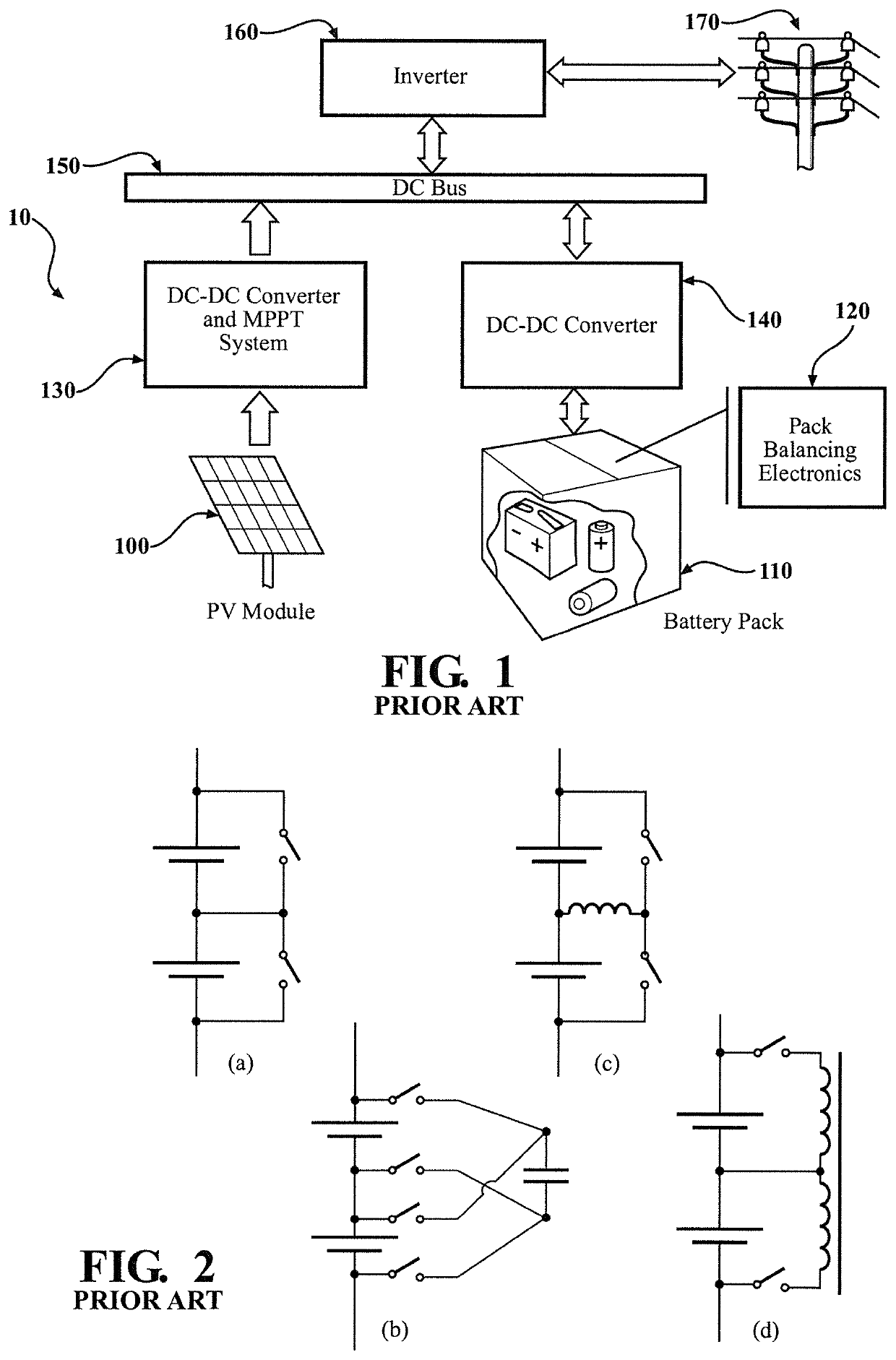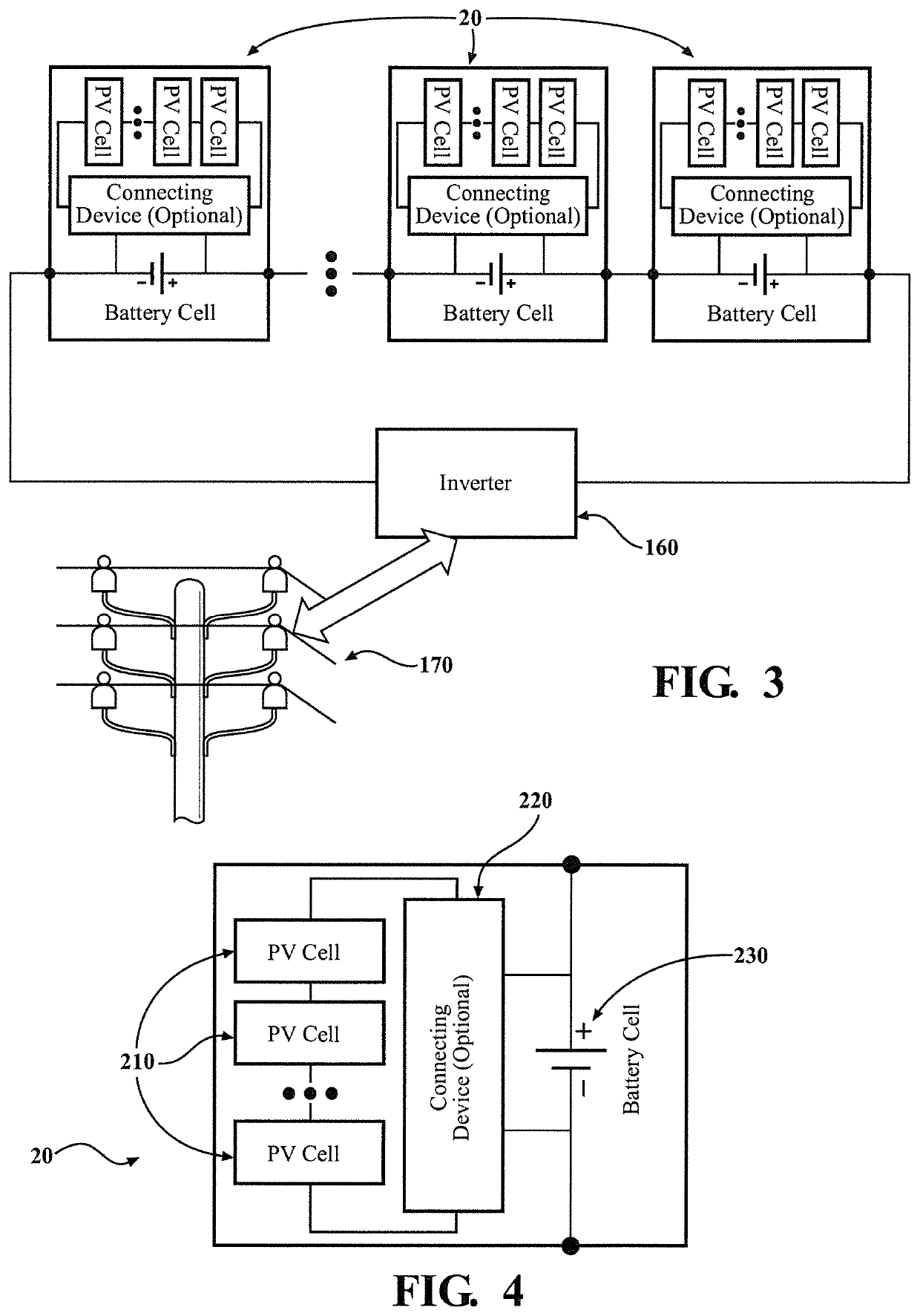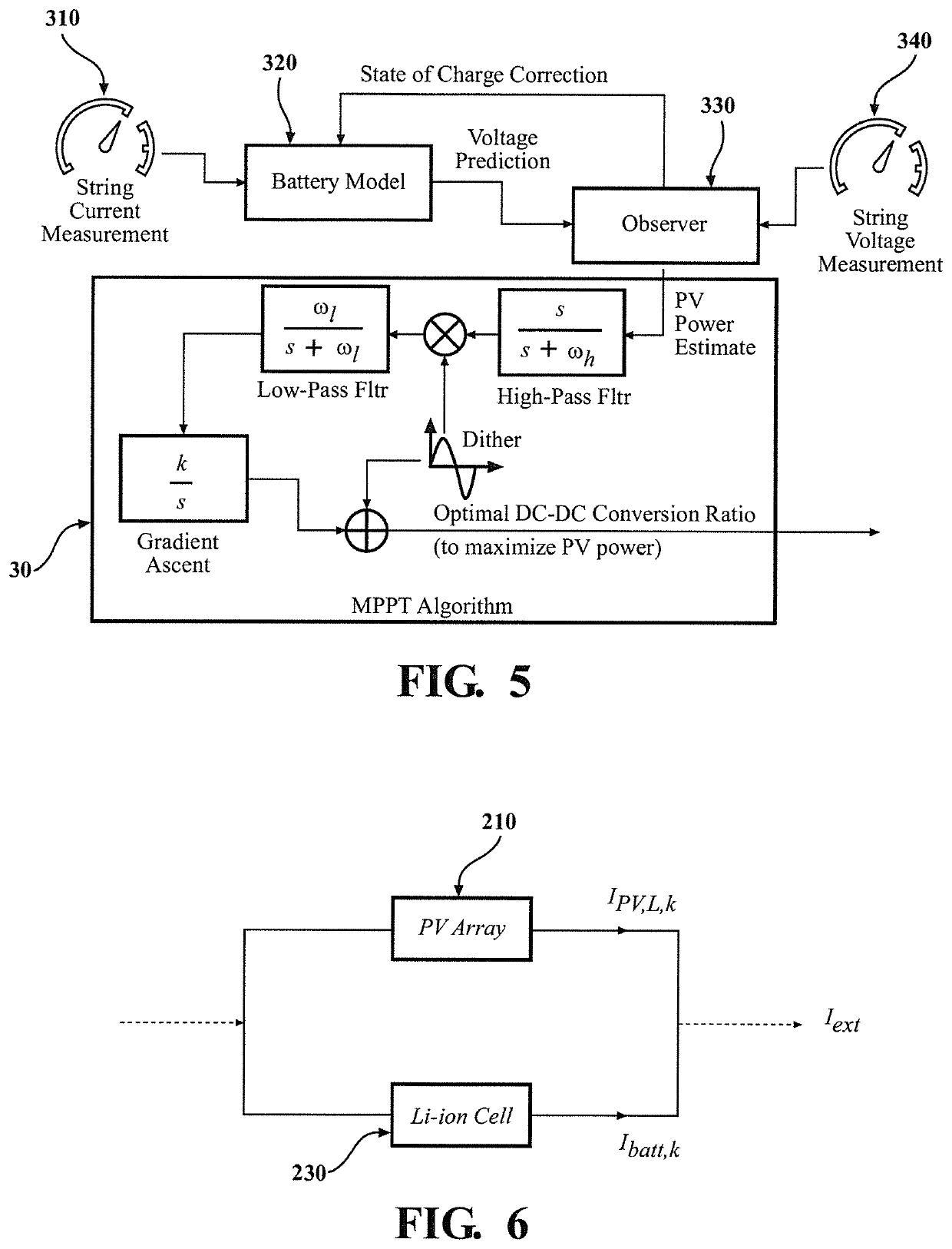Self-balancing photovoltaic energy storage system and method
a photovoltaic energy storage and self-balancing technology, applied in the field of photovoltaic energy storage systems, can solve problems such as the assembly of high-voltage battery packs, and achieve the effects of simple cost reduction, reduced power electronics needed, and reduced cos
- Summary
- Abstract
- Description
- Claims
- Application Information
AI Technical Summary
Benefits of technology
Problems solved by technology
Method used
Image
Examples
Embodiment Construction
[0051]A self-balancing photovoltaic energy storage system and method according to the present invention may take a variety of forms. Various examples of the present invention are shown in the Figures. However, the present invention is not limited to the illustrated embodiments. Reference will now be made in detail to some embodiments of the present invention, examples of which are illustrated in the accompanying figures. Wherever possible, the same reference numbers will be used throughout the drawings to refer to the same or like parts. Additional objects and features of the invention will be set forth in part in the description that follows and in part will become apparent to those having ordinary skill in the art upon examination of the following or may be learned from practice of the invention. The objectives of the invention may be realized and attained by the structure particularly pointed out in the written description and claims hereof as well as the appended figures.
[0052]T...
PUM
| Property | Measurement | Unit |
|---|---|---|
| Open-circuit Voltage | aaaaa | aaaaa |
| Open-circuit Voltage | aaaaa | aaaaa |
| Open-circuit Voltage | aaaaa | aaaaa |
Abstract
Description
Claims
Application Information
 Login to View More
Login to View More - R&D
- Intellectual Property
- Life Sciences
- Materials
- Tech Scout
- Unparalleled Data Quality
- Higher Quality Content
- 60% Fewer Hallucinations
Browse by: Latest US Patents, China's latest patents, Technical Efficacy Thesaurus, Application Domain, Technology Topic, Popular Technical Reports.
© 2025 PatSnap. All rights reserved.Legal|Privacy policy|Modern Slavery Act Transparency Statement|Sitemap|About US| Contact US: help@patsnap.com



